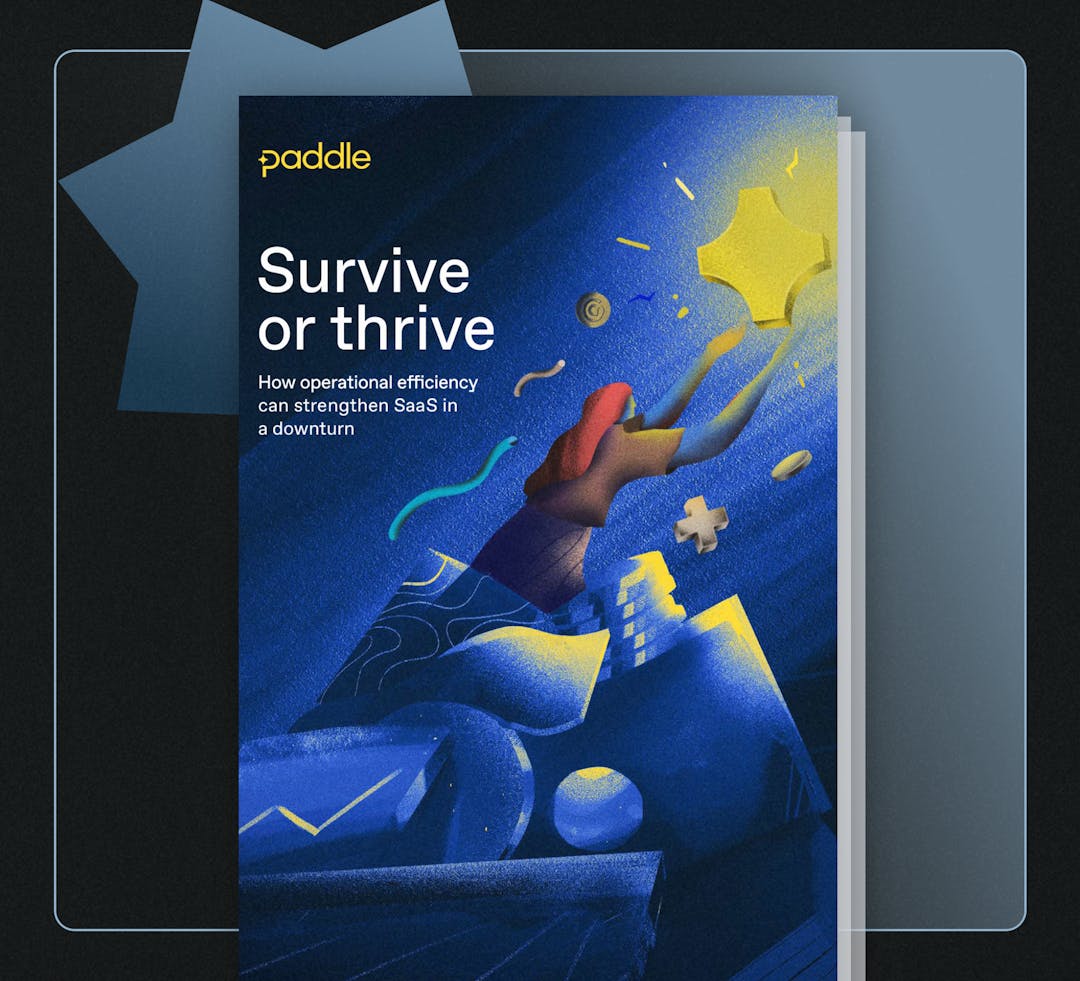How can you execute your go-to-market and product strategies, respond to new opportunities, and stand out against the competition – all while limiting customer acquisition costs, retaining those customers, and staying compliant globally?
It’s tricky enough to say in one breath, let alone actually achieve. Yet it’s the challenge all SaaS leaders face as they scale and try to exceed their growth objectives. And at its very core lies revenue delivery .
At Paddle we speak to all manner of software businesses looking to overcome challenges just like this. It all starts with identifying the areas of their revenue delivery infrastructure that block growth and lose them money.
Below we explain exactly what this infrastructure is, and how plugging the gaps in yours will help you capture more revenue.
So, what is a revenue delivery infrastructure?
A revenue delivery infrastructure is the systems, processes, and teams responsible for collecting your customers’ payments and delivering those funds as revenue for your business.
It’s how your business acquires new customers, grows their accounts and retains them for longer. It’s ultimately how you can make more money while staying compliant with tax, payment and data protection laws in each country where your customers are based.
What systems, processes and teams make up your revenue delivery infrastructure?
Every SaaS business has a revenue delivery infrastructure. Yes, even yours - you just might call it something different, or a number of different things.
Think about the way you manage the flow of funds from your customers’ accounts, through to the point you can recognize it as revenue. It’s a beast of a journey that usually includes:
- Checkout: How you manage the moment your users go from prospect to customer.
- Payments: Giving both one-off and recurring payments the best chance of success, from banking to payment gateways, payment methods, and currency conversion.
- Subscription management: How you retain the customers you worked so hard and spent so much to acquire.
- Sales tax compliance: Registering, filing, and remitting sales tax everywhere your customers are based.
- Financial compliance: Staying up to date and compliant with ever-changing, local regulations, like PSD2 in Europe.
- Fraud prevention: Protect your business and customers from fraudsters while making sure you don’t lose revenue to false payment declines .
- Buyer support: Retaining more customers by providing them with best-class support if they have queries about their order, subscription or payments.
- Reporting and analytics: Visibility into your user and revenue performance so you can make data-driven business decisions and respond quickly to new opportunities.
- And more!
How does your revenue delivery infrastructure impact growth?
For SaaS success, these systems and processes need to work seamlessly together.
Your subscription management needs to feed directly into how you manage payments and customer support. Your checkout needs to be tax compliant, and these calculations need to be reflected in your user and revenue data.
The list (unfortunately) goes on.
The problem with today’s revenue delivery infrastructure? It’s far from seamless and involves connecting a set of disparate systems each responsible for a different area of your business.
This means numerous integrations have to be set up. This takes time to action, and requires constant maintenance once they have been implemented. Time your engineers probably don’t have that could be better spent developing new features to make your product better for your customers.
And that’s before you even think about making changes or testing something new. Queue Founders trying to get to grips with intricate systems or a very grumpy CTO and engineering team who have to balance core product development with adding new workflows to these systems.
If this sounds all too familiar, it might be that you’re suffering from what’s known as the responsiveness gap . In simple terms: your revenue delivery infrastructure is actually blocking or slowing down your growth, rather than driving it.
A SaaS revenue delivery infrastructure should be ready to scale. At Paddle, we call this a “growth-ready” revenue delivery infrastructure, one that lets you:
- Convert more users into customers
- Launch products and expand into new segments quickly
- Experiment quickly with new subscription and pricing models
- Reduce churn and increase customer lifetime value
- Eliminate tax liability headaches
How do you get your revenue delivery infrastructure growth-ready?
For enterprise businesses with the time and resources in-house, developing a growth-ready infrastructure might be a case of hiring a dedicated team of people to manage and maintain integrations between multiple systems. But only if you are willing to assign them to the project long-term as constant changes will need to be made to keep the systems running well together.
For those looking to scale and quickly respond to changing requirements in a growing SaaS market, an all in-one-solution for revenue delivery is the answer.
Yes, this is a shameless plug (it is our blog after all) but think about it, one platform to replace all of those integrations. Subscriptions, payments, and your checkout all managed from one platform, with sales tax and even buyer support completely taken care of. Dreamy.
What could your finance, operations, support, and engineering teams do with all of that time back?
How about switching on the ability to accept payments in ten additional currencies while saving your development team two days of time every month? ( Read Matomo’s story)
Or going from launch to 43,000 customers from 181 countries in 18 months. ( Read Kaleido’s story)
You could even switch to a SaaS model and triple your revenue. ( Read MacPaw’s story)
Just a few ideas.
Find out everything you need to know about building a robust revenue infrastructure, right here.





